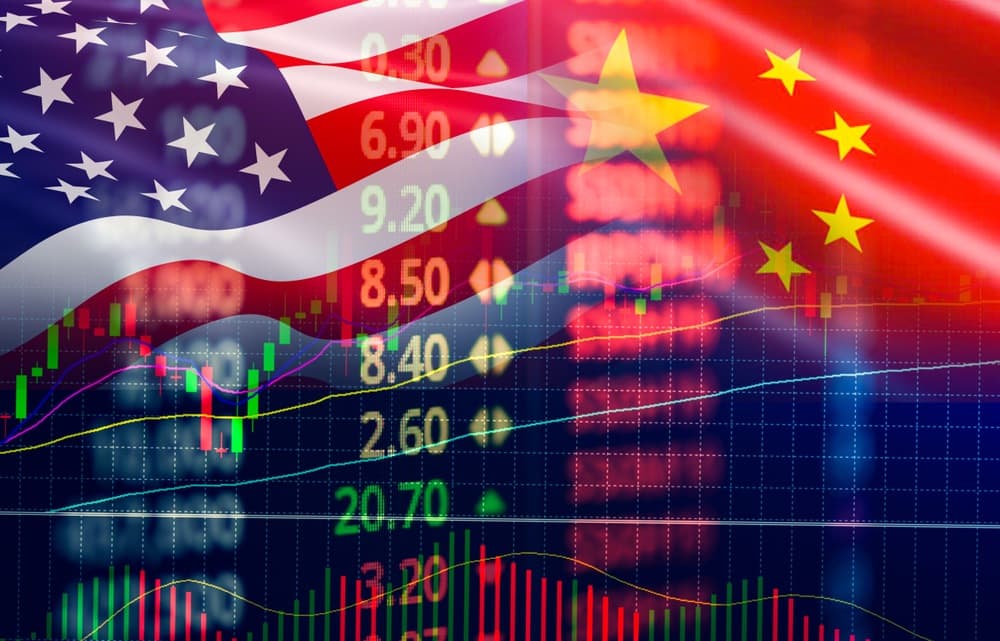
Gold topped $3,811 in Shanghai overnight.
The price caught headlines the way lightning catches an open field. We love gold for what it isn’t — politics, spin, or financial engineering. But when bullion makes the front page, history tells us to tread carefully.
Bloomberg reported that the People’s Bank of China is now using the Shanghai Gold Exchange as a magnet, luring “friendly” central banks to buy and store bullion inside Chinese borders.
Custody of sovereign reserves, once the domain of London, New York, and Zurich, could shift east.
“You weaponize the USD,” speculated Luke Gromen on strategic vision of Chinese monetary mandarins, “we’ll weaponize gold, and let’s see who runs out first.”

For the investor trying to manage money in this grand realignment, the signal is clear:
In 1947, when Bretton Woods exchange rate system established the U.S. dollar as the reserve currency of the world, the U.S. government held over 70% of the world’s gold reserves.

Today, the U.S. holds approximately 8,133.46 tonnes of gold, 20% of the above-ground reserves… and still the largest amount held by any single country.
But it’s declining as a percentage of total global reserves as foreign central banks keep buying.

If you’re a technical trader, Gold’s next consolidation point looks to be somewhere in the $4,100-$4,200 range.
(Source: Yahoo!)
 Powell’s Frazzled Confession
Powell’s Frazzled Confession
Stocks slid yesterday after Jerome Powell told a conference in Rhode Island, “Two-sided risks mean that there is no risk-free path.” His voice, by reporters’ accounts, carried strain.
Weak labor markets forced last week’s rate cut, he admitted, but inflation still gnaws at the Fed’s credibility.
Markets heard hesitation, not resolve. Amazon sank nearly 3%. The Magnificent Seven stumbled. Investors, sensing caution instead of certainty, stepped back. It’s not the numbers — it’s the tone that told the story.
 The Freight’s Gone Quiet
The Freight’s Gone Quiet
Here’s a slightly unsettling recession indicator: the Cass Freight Index fell another 9.3% year-on-year in August, its 28th straight monthly decline. Goods movement in the U.S. is slowing like a truck cresting a hill with no gas left in the tank.
One industry veteran told FreightWaves this is “the worst freight market in their lifetime.”

In 2008, a collapse in freight signaled the coming storm. Today, it could be the whisper of a recession already underway. (Source: Augur Infinity)
The freight market has the smell of diesel and desperation. That’s a sensation worth holding on to when Wall Street sells you euphoria.
 Shutdown Theater
Shutdown Theater
A government shutdown looms again, an American ritual no other developed nation indulges.
Since the Civiletti rulings of the early ’80s, the Antideficiency Act has required agencies to close their doors without appropriations.
Fourteen shutdowns later, the spectacle has become familiar: furloughed workers, slowed growth, rising costs.

The Peterson Foundation polled voters this week. Most see shutdowns as “distracting from larger fiscal challenges.” Investors should, too.
The noise of brinksmanship masks the deeper danger — the U.S. still lacks a long-term fiscal path.
 Trump at the UN
Trump at the UN
At the General Assembly in New York, Trump’s speech was more brawl than diplomacy. “Your countries are going to hell,” he told delegates, before declaring climate change a “con job.” He asked aloud what purpose the UN serves.
Then the pivot: after meeting Volodymyr Zelensky, Trump said Ukraine can win back lost ground. A reversal, delivered like a man flipping a coin in his hand.
Meanwhile, U.S. security officials said they foiled a plot to cripple New York City’s cellphone network — one more reminder that the stage itself is fragile.
 State Capitalism, American Style
State Capitalism, American Style
The administration now wants equity stakes in strategic companies.
Lithium Americas surged 90% on reports the government seeks 5–10% of shares as part of a $2.3B Thacker Pass loan renegotiation.
At the same time, SkyWater Technology, a rare U.S. defense-trusted chip foundry, is rumored to be next in the portfolio.
First Intel, now lithium, then SkyWater. At this pace, Washington will end the year as one of Wall Street’s biggest whales. Investors should ask: is this protection or distortion?
We dig deep into the Trump administration’s effort to “own” stocks as part of their grand realignment strategy in this month’s episode of the Grey Swan Bulletin. If you’re a paid reader, we recommend you review our thoughts here.
 Milei’s Balancing Act
Milei’s Balancing Act
Trump also met Argentina’s Javier Milei, who left his chainsaw at home. The libertarian firebrand needs to cover $9.5 billion in debt payments next year while his peso slides and unemployment rises.
Treasury Secretary Scott Bessent promised “all options for stabilization,” while the World Bank accelerated $4 billion in loans.
Milei promised a V-shaped recovery. What voters are reacting to is layoffs, inflation games, and a dwindling reserve chest.
The jury’s still out on the greatest political experiment of our time. But we have to say, we’re pulling for our friends at the end of the world.
 The Broader Picture
The Broader Picture
The OECD now projects U.S. growth to slow to 1.8% in 2025, down from 2.8% last year.
Global GDP will tick at 3.2%, but tariffs and stock market risk hang over that forecast like a storm cloud. Yale’s survey found 71% of CEOs believe Trump’s tariffs hurt their businesses.
The globalization model that once underpinned markets—cheap labor, seamless supply chains—is breaking apart. The new premium is resilience, not efficiency.
 The Lesson for Investors
The Lesson for Investors
“There are moments in history,” we quote and paraphrase from Santiago Capital, “when the ground beneath markets shifts so profoundly that yesterday’s assumptions become tomorrow’s blind spots.”
For nearly half a century, investors lived in the age of globalization, where efficiency reigned supreme. Outsourcing to low-cost economies, fine-tuning “just-in-time” supply chains, and expanding multinational footprints across borders were accepted as unquestionable laws of value creation.
That era is ending.
The consensus that once bound the global economy is splintering under the weight of escalating U.S.–China trade tensions, resurgent nationalism, and the urgent reshoring of critical industries.
The very fabric of globalization is fraying, replaced by an era of systemic upheaval, geopolitical rivalry, and economic fragmentation. In short, a “Fourth Turning” has arrived, one that will reshape the investment landscape for decades to come.
For investors, the message could not be clearer: the assumptions of the old order no longer apply.
Efficiency has given way to fragility, while resilience has become the premium asset. Political leaders, chastened by pandemic shortages, semiconductor scarcities, and the weaponization of energy supplies, now prioritize security and redundancy even at the cost of higher prices.
This inversion creates both peril and promise. The investor who understands it will not mistake noise for signal, nor trust the surface when the iceberg lies beneath.
~Addison
P.S.: Don’t miss Grey Swan Live! this Thursday at 2 p.m. ET. Shad Marquitz will break down commodities — gold above $3,700, silver over $43, copper near highs, even uranium breaking out.
He’ll show setups, drivers, and stocks worth watching.
Meanwhile, Mr. Packer just locked in a return of over 150% on a small-cap uranium stock in the Grey Swan Trading Fraternity. Even more impressive? The trade took less than a week.
“It seems like every time a commodity stock hits the news, the space pops,” notes Andrew. “And once it drops again, we’ll find a new trading idea among commodities.” You won’t want to miss Andrew and Shad’s discussion on commodities. Sign up here to become a member.
If you have any questions for us about the market, send them our way now to: Feedback@GreySwanFraternity.




